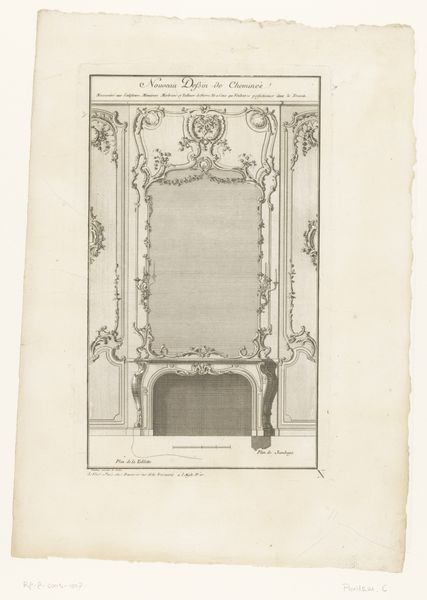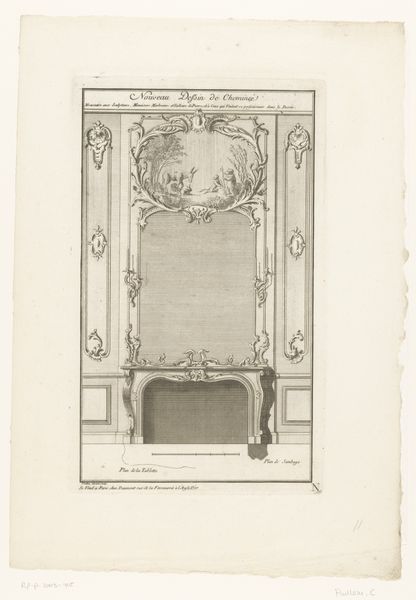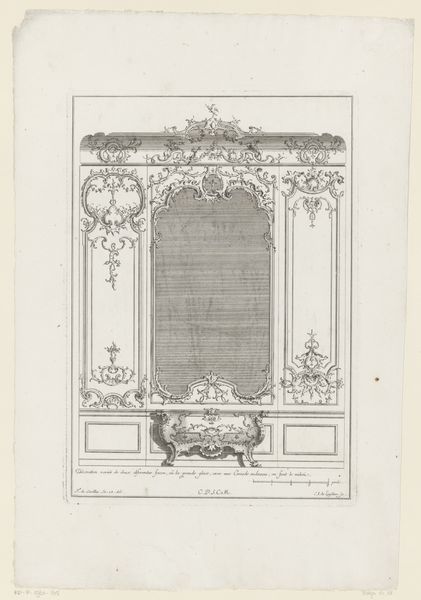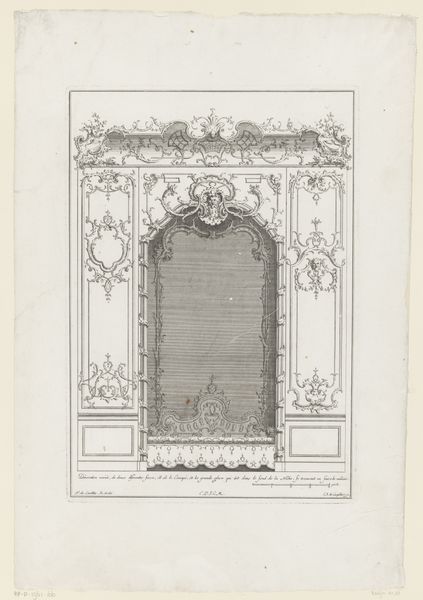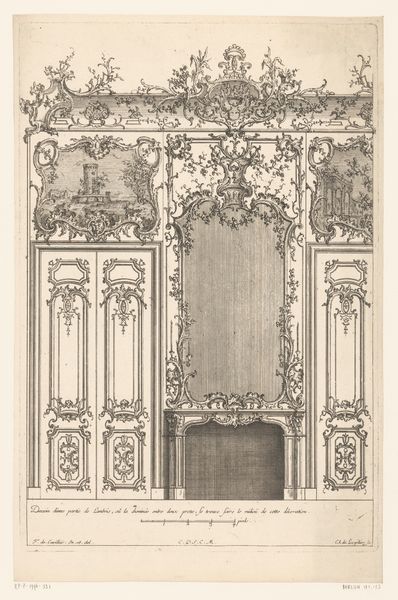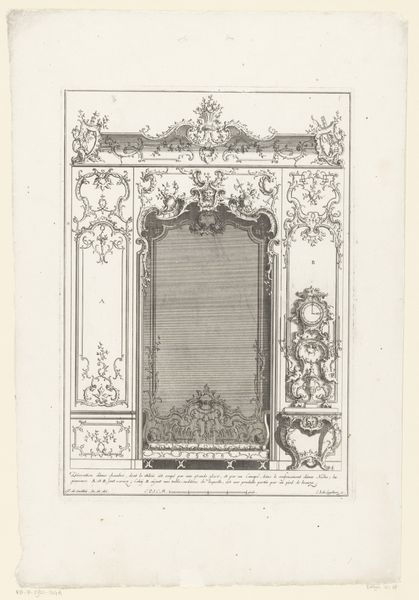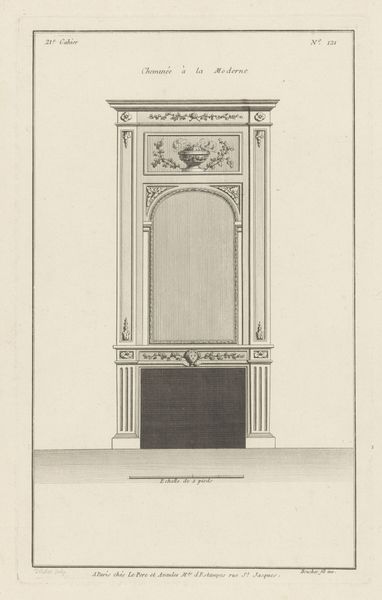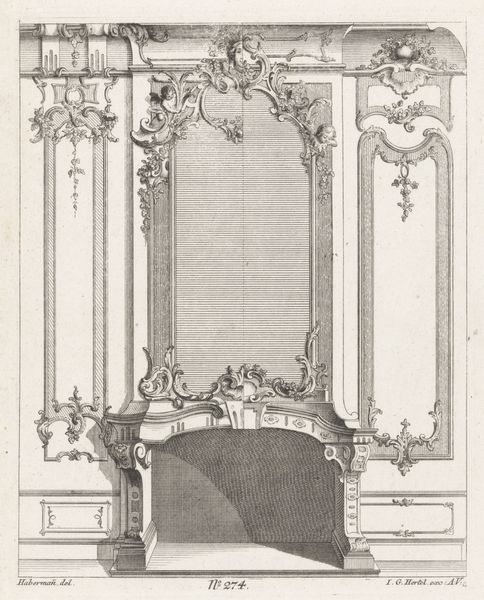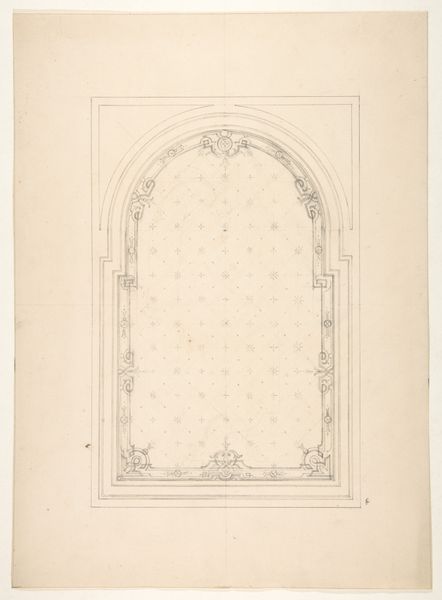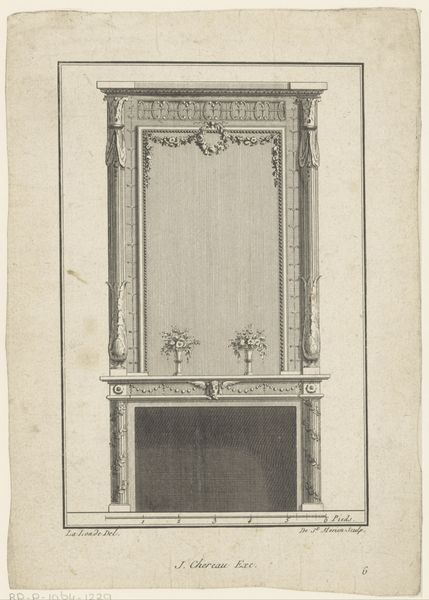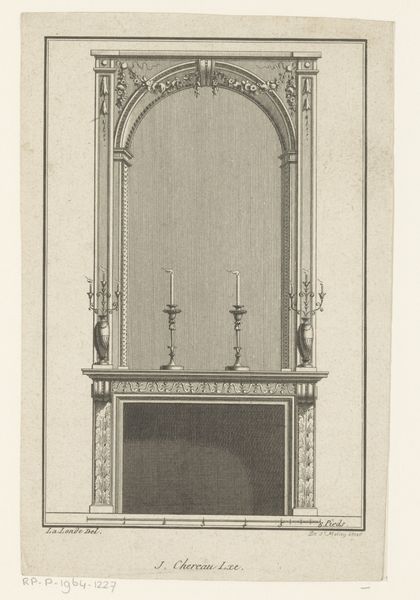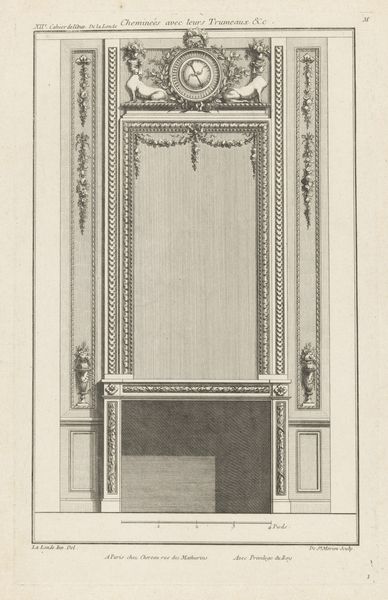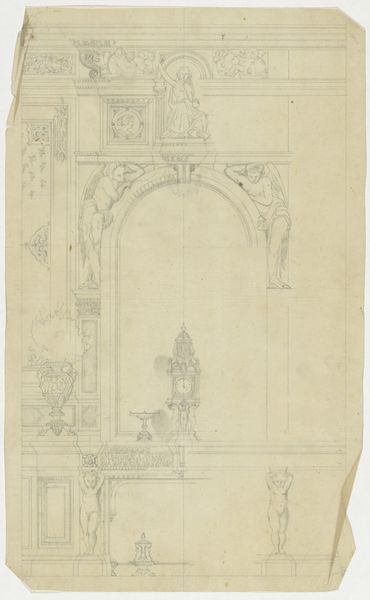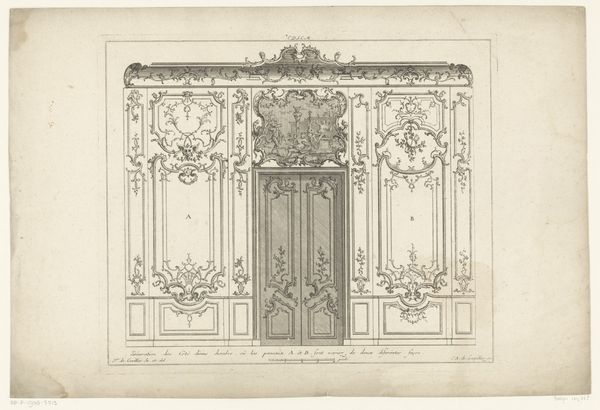
Dimensions: height 316 mm, width 194 mm
Copyright: Rijks Museum: Open Domain
Editor: This is a print entitled "Schouw met cartouche met dieren" by Claude René Gabriel Poulleau, dating back to sometime between 1759 and 1775. The refined lines create this elegant and stately design, but its coolness also gives off a very detached, almost impersonal atmosphere. How would you interpret this work? Curator: Indeed, observe how the precise engraving emphasizes form and proportion, but it's also about aspiration and status. Note the title, “Nouveau Dessein de Cheminée,” meaning a new design for a chimney piece. This wasn’t just a drawing; it was a proposal, promising modernity and elegance to those who could afford it. Do you see the animals, the "dieren" in the cartouche? Editor: Yes, faintly. Are they symbolic in any way? Curator: Precisely! During the Baroque period, animals were often incorporated into decorative arts to convey specific meanings. Hunting scenes, for example, represented wealth and dominance. The animals might represent the patron's virtues or desired qualities. They create cultural memory and speak volumes about the patron's aspirations. Now, consider the placement, high above the hearth. What message does that positioning convey to you? Editor: Perhaps a sense of looking up to power and sophistication? That the family wants visitors to perceive the importance of the imagery? Curator: Precisely! This artwork reveals so much about the cultural values of the time – the importance of status, the celebration of beauty, and the human desire for order and harmony, all through the language of visual symbols. It encourages the modern viewer to think about visual language in architectural, decorative pieces like this. Editor: That's fascinating! I hadn't considered the deeper cultural implications embedded within what seemed like a simple fireplace design.
Comments
No comments
Be the first to comment and join the conversation on the ultimate creative platform.
